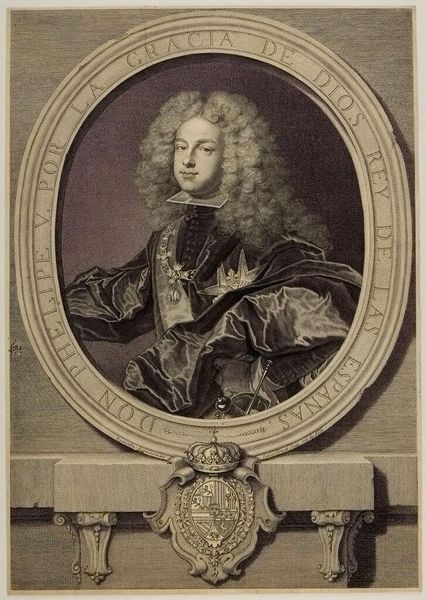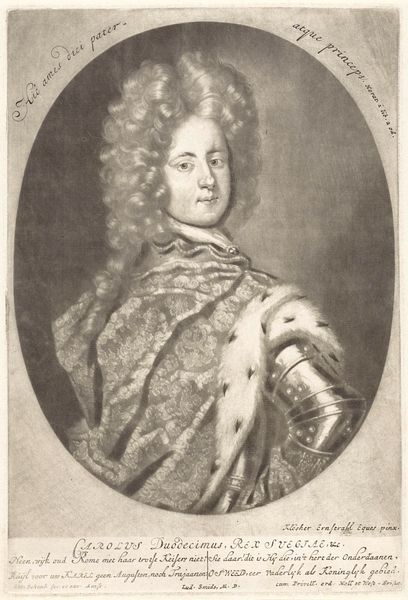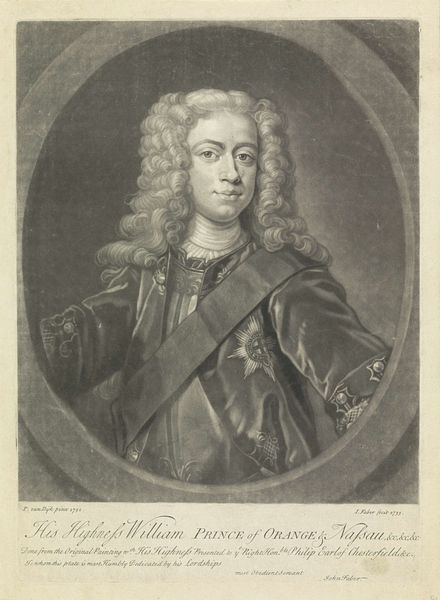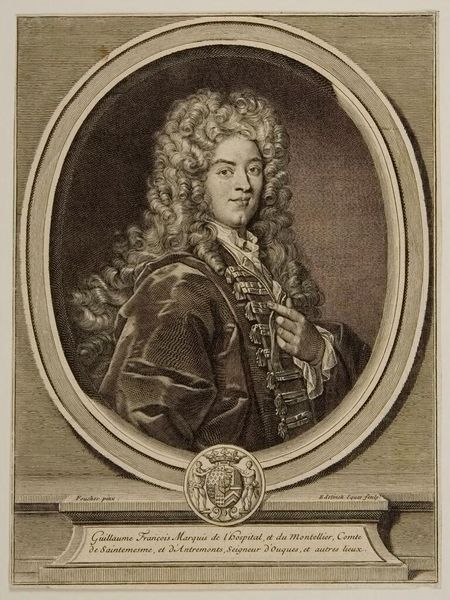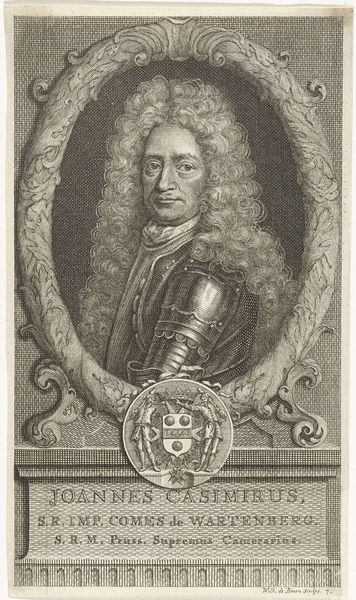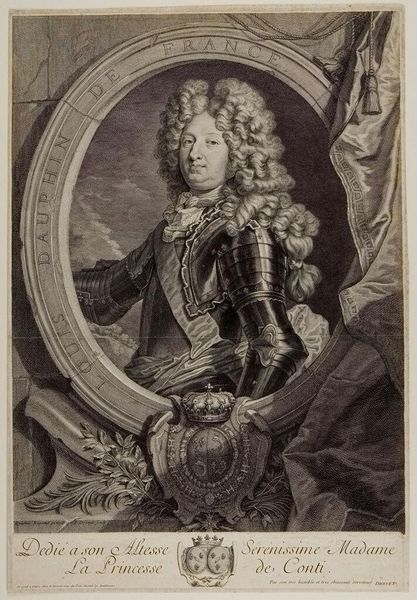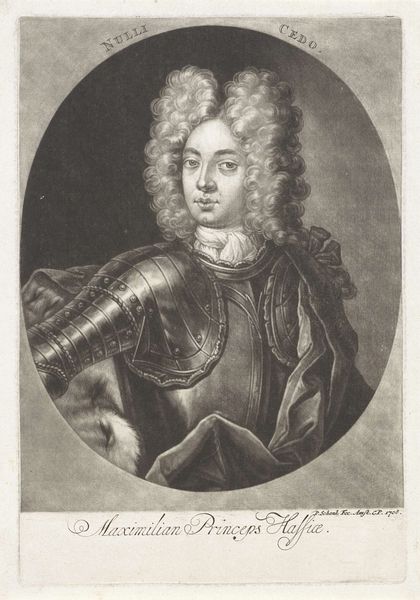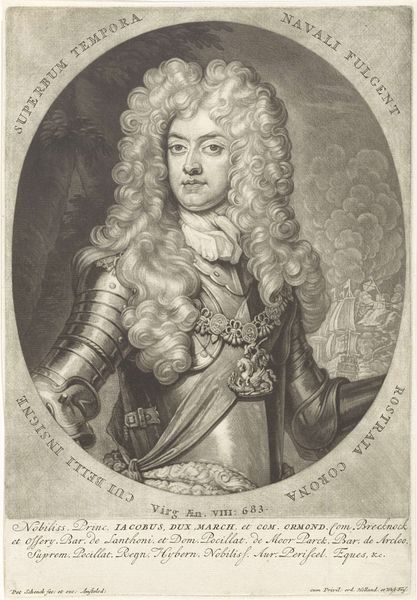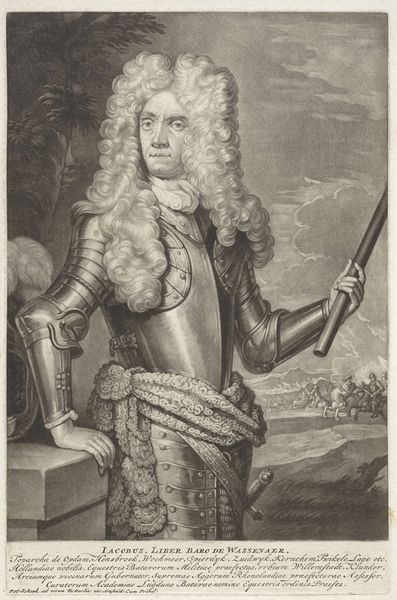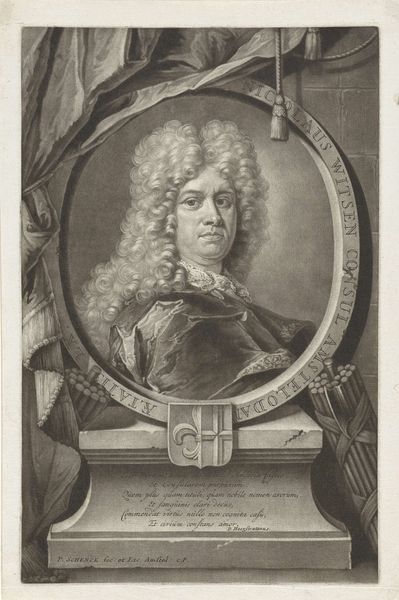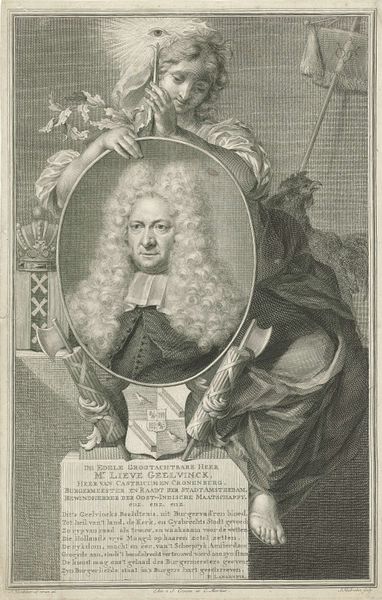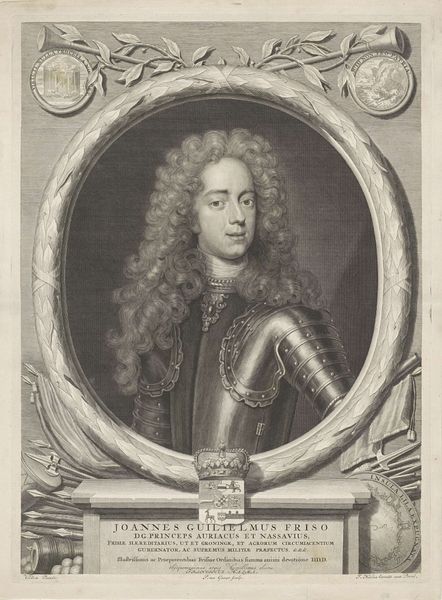
James Francis Edward Stuart, the Prince of Wales c. 18th century
0:00
0:00
Dimensions: Image: 37 Ã 27.4 cm (14 9/16 Ã 10 13/16 in.) Sheet: 37.9 Ã 28 cm (14 15/16 Ã 11 in.)
Copyright: CC0 1.0
Curator: Here we have Michel Dossier’s portrait of James Francis Edward Stuart, the Prince of Wales. It’s an engraving, a printmaking technique that allows for incredible detail. The sheet measures roughly 38 by 28 centimeters and it resides here at the Harvard Art Museums. Editor: It’s stunning. The contrast between light and shadow gives a real sense of depth, and the ornate details, like the laurel wreath and the heraldic symbols, speak to a potent visual language of power. What paper and ink were used to communicate such power? Curator: It was intended as propaganda, solidifying James’s image as the rightful heir to the British throne. Prints circulated widely, shaping public perception and bolstering his claim amidst political turmoil. Editor: So, the image itself becomes a tool, a mass-produced object intended to influence opinion. This challenges the romantic view of the artist as solitary genius, doesn't it? Curator: Indeed. It reflects the political realities inherent in artistic production. Well, looking at this print reminds us that art always exists within broader power structures. Editor: It’s a potent reminder of how images participate in shaping narratives and reinforcing social orders. The materiality of the work is inseparable from its political function.
Comments
No comments
Be the first to comment and join the conversation on the ultimate creative platform.
